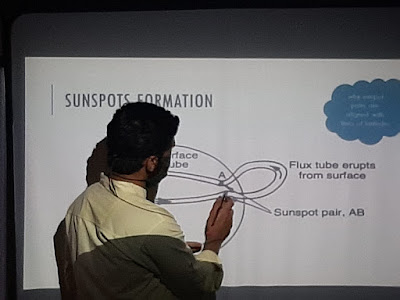The Milky Way is one of the brightest and famous arms of our galaxy. This is in the region of Scorpius and Sagittarius constellations, this region is also the center of our galaxy. It is a magnificent view when seen under dark skies away from the city light pollution. The Milky Way will appear as a hazy band in the sky, rich with stars, with the brightest region at Sagittarius and dimmer toward north. Many people mistake it for clouds, if you get the doubt, wait for some time and the Milky Way will move along with the stars.
The band of the Milky Way extends from constellations Sagittarius, Sagitta, Cygnus, Cassiopeia to Perseus in the north. To enjoy the full Milky Way band, a place with an unobstructed view of the horizons is essential.
The Milky Way will be in opposition in the middle of June, that means as the Sun is setting in the west, the Milky Way will be rising in the east. June and July are the best months to enjoy the Milky Way all through the night. I thought making this list of rise, meridian transit and set times of the Milky Way would be useful, so I made one.
Here are the Times for viewing the Milky Way.
June 15: The Milky Way will rise at 7pm, it will reach meridian, highest altitude in the sky, at midnight and the Milky Way will set at 5:30am. The Milky Way will be visible all night.
July 15: The Milky Way will rise at 5pm, reach meridian, highest altitude in the sky at 10:30pm and the Milky Way will set at 3:45pm.
August 15: Milky way will be at meridian, highest altitude in the sky at 8:30pm and the Milky Way will set at 2am.
September 15: By the time the Sun sets, the Milky Way will be at meridian, highest altitude in the sky and it will set at midnight.
October 15: Milky Way will set at 9:30pm.
November 15: Milky Way will set at 7:30pm.
The Sun will be in Sagittarius in December so the Milky Way is not visible.
Jan 15: The Milky Way will rise at 5am, in twilight.
Feb 15: The Milky Way will rise at 3am.
March 15: The Milky Way will rise at 1am.
April 15: The Milky Way will rise at 11pm and will reach meridian, highest altitude at 4:30am.
May15: The Milky Way will rise at 9pm and it will reach meridian, highest altitude at 2:30am.
As the best months to view the Milky Way galaxy are in the months of June and July, this will make it difficult for south India due to the arrival of Monsoon. To see the band full night or to photograph the band, it is better to move to places where the monsoon has not yet reached.
You can use the list when going on a trek in a remote place. Check the times during the month and enjoy the view of the Milky Way.


















